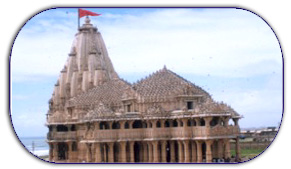
There is no denying the fact that people all over the world have an irresistible urge to know about Gujarat - its history and culture. Enclosed by Pakistan and the states of Rajasthan to the north eastern part of the country, Madhya Pradesh to the east and Maharashtra and the Union territories of Diu, Daman, Dadra and Nagar Haveli to the south, Gujarat is one of the prime tourist destinations in India. A seat for deep seated folk and classical cultures, the state reflects a rich heritage of the country’s past.
Trying to know more and more about Gujarat will lead you to explore avenues more than you actually expected. Walks along the beautiful Diu Beach, Ahmedpur Mandvi Beach, or visits to the various temples which are some of the finest tourist attractions in India will offer some of the memorable moments of your life. The Rann of Kutch which occupies a large area of western Gujarat is famous for its rare ecosystem, wildlife, fossils, and terrain.
Fast Facts
| Area | 1,96,024 sq km |
| Population | 41,309,582 |
| Religion | Hinduism (89.48%), Islam (8.73%), Others (1.79%) |
| Maximum Temperature | 42°C |
| Minimum Temperature | 14°C |
| Capital | Gandhinagar |
| Languages | Gujarati, Hindi, English |
| Best Time To Visit | October to March |
History
Having derived its name from Gujjaratta, meaning the land of the Gujjars, a tribe which migrated to India around the 5th century AD, Gujarat has its history dating back to many Indus Valley and Harappan centers that have been discovered in the states like Rangpur, Lothal, Lakhabaval, Dholavira, Amri, and Rozdi. Gradually with the advent of the Yadava tribe led by Lord Krishna, some 3,500 years ago, Gujarat reached its most glorious days.
History about Gujarat says that Ashoka, the Mauryan king extended his kingdom to Gujarat. The downfall of the Maurya Empire subsequently led the smaller kingdoms to establish their authority in this state. The state prospered greatly during the time of Solankis from the 9th century. In the 12th century AD, Allauddin Khilji, the Sultan of Delhi defeated the Waghela king of Gujarat and a long era of Muslims started. Power changed hands to the Marathas and ended the Muslim rule in the 18th century only to be further transferred to the British in the early 19th century. The East India Company set up its first center in Surat.
Gujarat was initially a part of Mumbai state till 1960; and Gujarat’s people decided to have their state divided on the basis of language and culture. This led to creation of the two new states of Gujarat and Maharashtra.


No comments:
Post a Comment